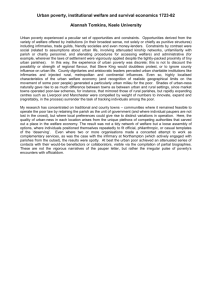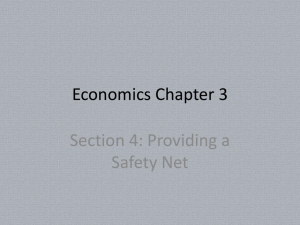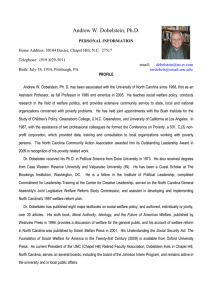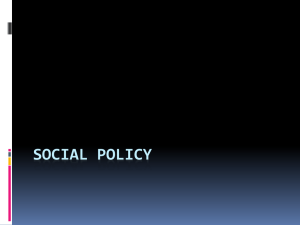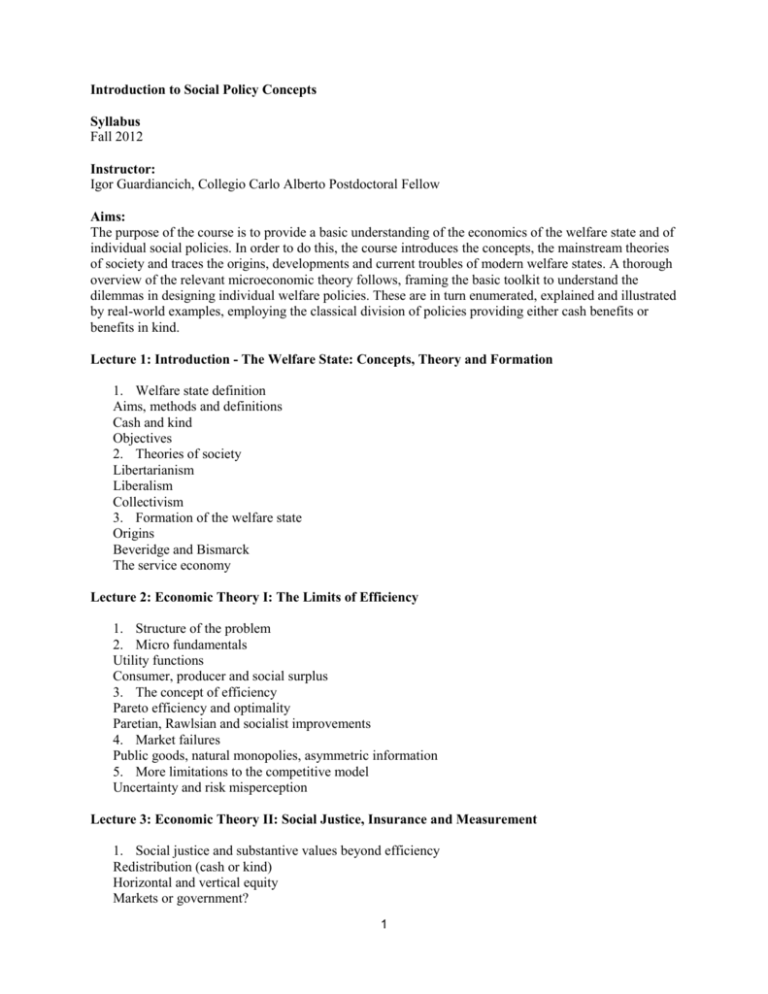
Introduction to Social Policy Concepts
Syllabus
Fall 2012
Instructor:
Igor Guardiancich, Collegio Carlo Alberto Postdoctoral Fellow
Aims:
The purpose of the course is to provide a basic understanding of the economics of the welfare state and of
individual social policies. In order to do this, the course introduces the concepts, the mainstream theories
of society and traces the origins, developments and current troubles of modern welfare states. A thorough
overview of the relevant microeconomic theory follows, framing the basic toolkit to understand the
dilemmas in designing individual welfare policies. These are in turn enumerated, explained and illustrated
by real-world examples, employing the classical division of policies providing either cash benefits or
benefits in kind.
Lecture 1: Introduction - The Welfare State: Concepts, Theory and Formation
1. Welfare state definition
Aims, methods and definitions
Cash and kind
Objectives
2. Theories of society
Libertarianism
Liberalism
Collectivism
3. Formation of the welfare state
Origins
Beveridge and Bismarck
The service economy
Lecture 2: Economic Theory I: The Limits of Efficiency
1. Structure of the problem
2. Micro fundamentals
Utility functions
Consumer, producer and social surplus
3. The concept of efficiency
Pareto efficiency and optimality
Paretian, Rawlsian and socialist improvements
4. Market failures
Public goods, natural monopolies, asymmetric information
5. More limitations to the competitive model
Uncertainty and risk misperception
Lecture 3: Economic Theory II: Social Justice, Insurance and Measurement
1. Social justice and substantive values beyond efficiency
Redistribution (cash or kind)
Horizontal and vertical equity
Markets or government?
1
2. Insurance
Demand and supply
Asymmetric information (adverse selection and moral hazard)
Private and social insurance
3. Measuring welfare
Poverty
Inequality
Lecture 4: Cash Benefits: Unemployment, Pensions and Poverty Alleviation
1. Unemployment, sickness and disability
State intervention (efficiency)
Public provision of insurance
Policy options and incentive structures
2. Old-age pensions
Organization and functioning
Incomplete insurance, information and behavioural problems
Privatization: pros and cons
Incentive structures and main solutions
3. Poverty relief
State intervention, targeting, coverage
Poverty and unemployment traps
Lecture 5: Benefits in Kind: Healthcare, School and Higher Education
1. Health and healthcare
Efficiency and distribution
State intervention: information and behavioural problems, incomplete contracts and insurance, equity
Institutional arrangements
2. School education
Efficiency and distribution
State intervention: information and behavioural problems, incomplete markets, equity
Types of intervention
3. Tertiary education
State intervention: efficiency in higher education and finance
Types of intervention, strategies
The roles of the state
Readings:
Most of the material for this introductory course will be presented in class. The students will receive well
in advance the relevant PowerPoint presentations, which can be used as stand-alone study material.
For a better understanding of the topics and issues involved, the following texts may be consulted:
***Barr, Nicholas. 2012. Economics of the Welfare State, 5th Edition. Oxford: Oxford University Press.
Iversen, Torben, and Anne Wren. 1998. Equality, Employment and Budgetary Restraint: The Trilemma of
the Service Economy. World Politics 50 (4): 507-546.
Weimer, David L., and Aidan R. Vining. 2005. Policy Analysis: Concepts and Practices, 4th Edition.
Upper Saddle River, NJ: Pearson Prentice Hall.
***Fundamental text.
2



